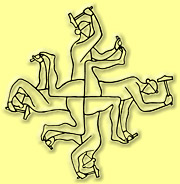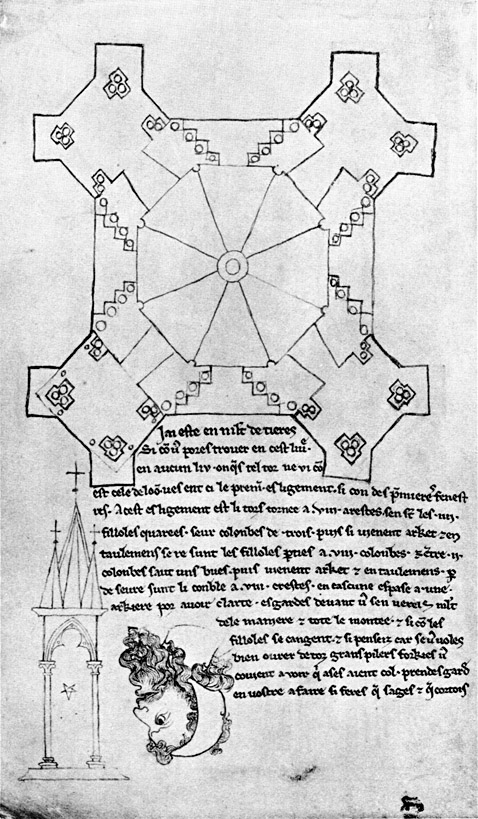Sketchbook of Villard de Honnecourt Page XVIII (original) (raw)
 Villard de Honnecourt worked for the Cistercian Order as an architect between 1225 and 1250 CE. Although his contemporary reputation was such that he was invited to Hungary, little is actually known of his responsibilities or role in the construction of specific churches. Today he is remembered for his collection of 33 parchment folios, folded once and bound in pigskin 160 mm x 240 mm. Of interest to freemasons, these 65 plates reveal the importance of geometry in the stonemasons' craft. Of interest to students of sacred geometry is his inclusion of several examples of the pentagram. Of the seven depictions, three were decorative while the remainder were intended as guides for drawing. An argument could also be made that they demonstrate a familiarity with the importance of the golden ratio. THE BAPHOMET THE PENTAGRAM TRANSITION THEORY Villard de Honnecourt worked for the Cistercian Order as an architect between 1225 and 1250 CE. Although his contemporary reputation was such that he was invited to Hungary, little is actually known of his responsibilities or role in the construction of specific churches. Today he is remembered for his collection of 33 parchment folios, folded once and bound in pigskin 160 mm x 240 mm. Of interest to freemasons, these 65 plates reveal the importance of geometry in the stonemasons' craft. Of interest to students of sacred geometry is his inclusion of several examples of the pentagram. Of the seven depictions, three were decorative while the remainder were intended as guides for drawing. An argument could also be made that they demonstrate a familiarity with the importance of the golden ratio. THE BAPHOMET THE PENTAGRAM TRANSITION THEORY |
|---|
Sketchbook of
Villard de Honnecourt
Page XVIII
 As you will learn from this book, I have been in many lands, but nowhere have I seen a tower like that of Laon. Detail: The Sketchbook of Villard de Honnecourt. Edited by Theodore Bowie. Bloomington and London: Indiana University Press, 1959 LCCN: 68-14615
As you will learn from this book, I have been in many lands, but nowhere have I seen a tower like that of Laon. Detail: The Sketchbook of Villard de Honnecourt. Edited by Theodore Bowie. Bloomington and London: Indiana University Press, 1959 LCCN: 68-14615
Facsimile of the Sketch-book of Wilars de Honecort... published by M. Alfred Darcel from the MS. of M. J.B.A. Lassus... translated, edited and augmented... by the Rev. Robert Willis. London, John Henry and James Parker, 1859.
MS. 19093 French Collection, Bibliothèque Nationale, Paris [No. 1104 Library of Saint-Germain-des Prés until c. 1800]